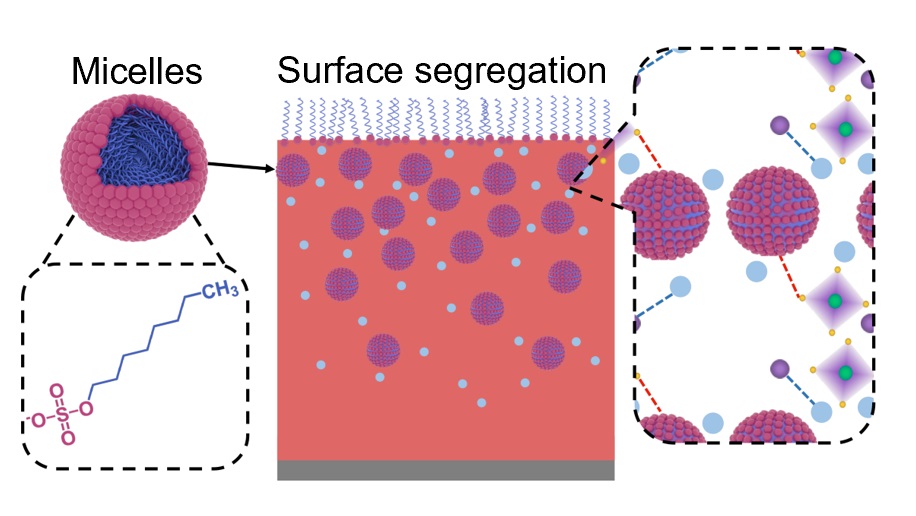Prof. YE Jichun’s team at the Ningbo Institute of Materials Technology and Engineering (NIMTE) of Chinese Academy of Sciences (CAS) developed a long-alkyl-chain anionic surfactant (LAS) additive, which can remarkbly improve the long-term operational stability of perovskite/silicon tandem solar cells. The study was published in Nature Communications.
Thanks to the rapid development of the power conversion efficiency (PCE) which has leapt to 33.2% from 13.7% over the past 8 years, perovskite/silicon tandem solar cells enjoy a promising prospect.
However, the relatively low stability of perovskite active layers still hinders the development and commercialization of perovskite/silicon tandem devices.
Traditional methods to improve the stability involve encapsulation, crystallization engineering, and defect passivation. Similar to "stress corrosion" in metal, glass and polymers, subcritical perovskite deterioration inevitably occurs due to tensile stresses during the fabrication and operation, which will impair the device efficiency.
To suppress the "stress corrosion", scientists at NIMTE developed a novel LAS additive for the perovskite/silicon tandem solar cells.
By virtue of the surface segregation and micellization, the LAS additive can chemically modify the perovskite crystallization kinetics. Besides, it can physically form a glue-like scaffold to eliminate the residual stress.
Thanks to the reduced defects, suppressed ion migration, and improved energy level alignment, the unencapsulated perovskite and perovskite/silicon tandem solar cells showed excellent operational stability.
Upon continuous light illumination, the LAS-modified single-junction perovskite and dual-junction perovskite/silicon tandem devices can retain 85.7% and 93.6% of their original PCE after 3,000 h and 450 h at maximum power point tracking, respectively, which were among the best stabilities reported to date under similar conditions.
The innovative approach in this study can provide insight into the commercial production and large-scale application of highly stable perovskite/silicon tandem solar cells.
This work was supported by the National Key Research and Development of China (No. 2018YFB1500103), National Natural Science Foundation of China (No. 62204245), the Science and Technology Development Fund, Macao SAR (Nos. FDCT-0044/2020/A1, 0082/2021/A2) and UM’s research fund (No. MYRG2020-00151-IAPME).

Fig. The spatial distributions of long-alkyl-chain anionic surfactant additives in perovskite precursors (Image by NIMTE)
Contact
YE Jichun
Ningbo Institute of Materials Technology and Engineering
Email: jichun.ye@nimte.ac.cn

